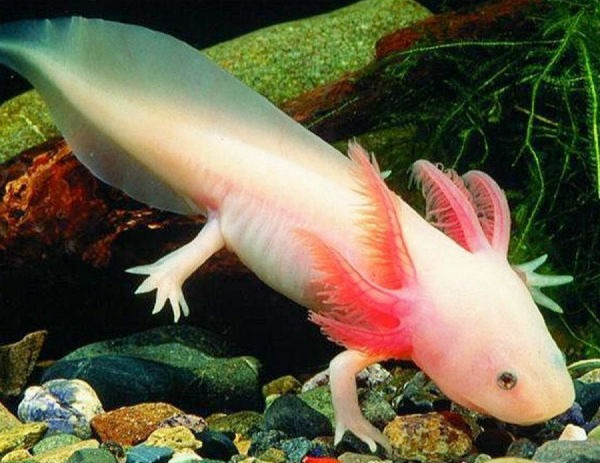 Axolotl, also known as a Mexican salamander or Mexican walking fish, is a specie of Salamander which originated from the Lake Xochimilco in Mexico. It is known for living its whole life in larval form without undergoing a metamorphosis, unlike other salamanders. Despite growing legs, the Axolotl retains its gills and remains living underwater. These unusual characteristics and exotic appearance made this creature a popular pet to keep.
Axolotl, also known as a Mexican salamander or Mexican walking fish, is a specie of Salamander which originated from the Lake Xochimilco in Mexico. It is known for living its whole life in larval form without undergoing a metamorphosis, unlike other salamanders. Despite growing legs, the Axolotl retains its gills and remains living underwater. These unusual characteristics and exotic appearance made this creature a popular pet to keep.
Just like other aquatic creatures, transporting an Axolotl can be a tricky procedure. The animal must be kept in a comfortable and stress-free environment during the move. For long-distance transportation, it is best to hire a pet shipping company to ensure that the Axolotl is in the best condition and is well-taken cared for during transport.
When moving to short distances, the Axolotl owner can do the transport himself as long as proper procedures are followed. Here are some tips on how to properly transport an Axolotl.
For a trip that will take 6-8 hours, the Axolotl must be transferred into a plastic container with an air-tight lid and is big enough to comfortably accommodate the animal. Fill the container with unchlorinated water (preferably from the tank the Axolotl is coming from) just so the animal is completely submerged. Carefully transfer the animal into the prepared container. Let the Axolotl settle in its new environment for a few minutes before placing the lid.
Place the plastic container into a cooler. Pack hand towels in between the container and cooler to prevent movement. Depending on the temperature and humidity, you may want to add some ice packs outside the container to keep the water cool and prevent stress to the Axolotl.
Close the cooler and make sure that the animal is not exposed to sunlight or any bright light. Axolotls have no eyelids and exposure to intense light may cause stress to the animals.
It’s also a good idea to bring along an extra jug of tank water in case of the water in the container spills and you need to add more.
Your Axolotl is now ready for transport. Drive carefully to prevent jostling the animal around its container while in transit.
